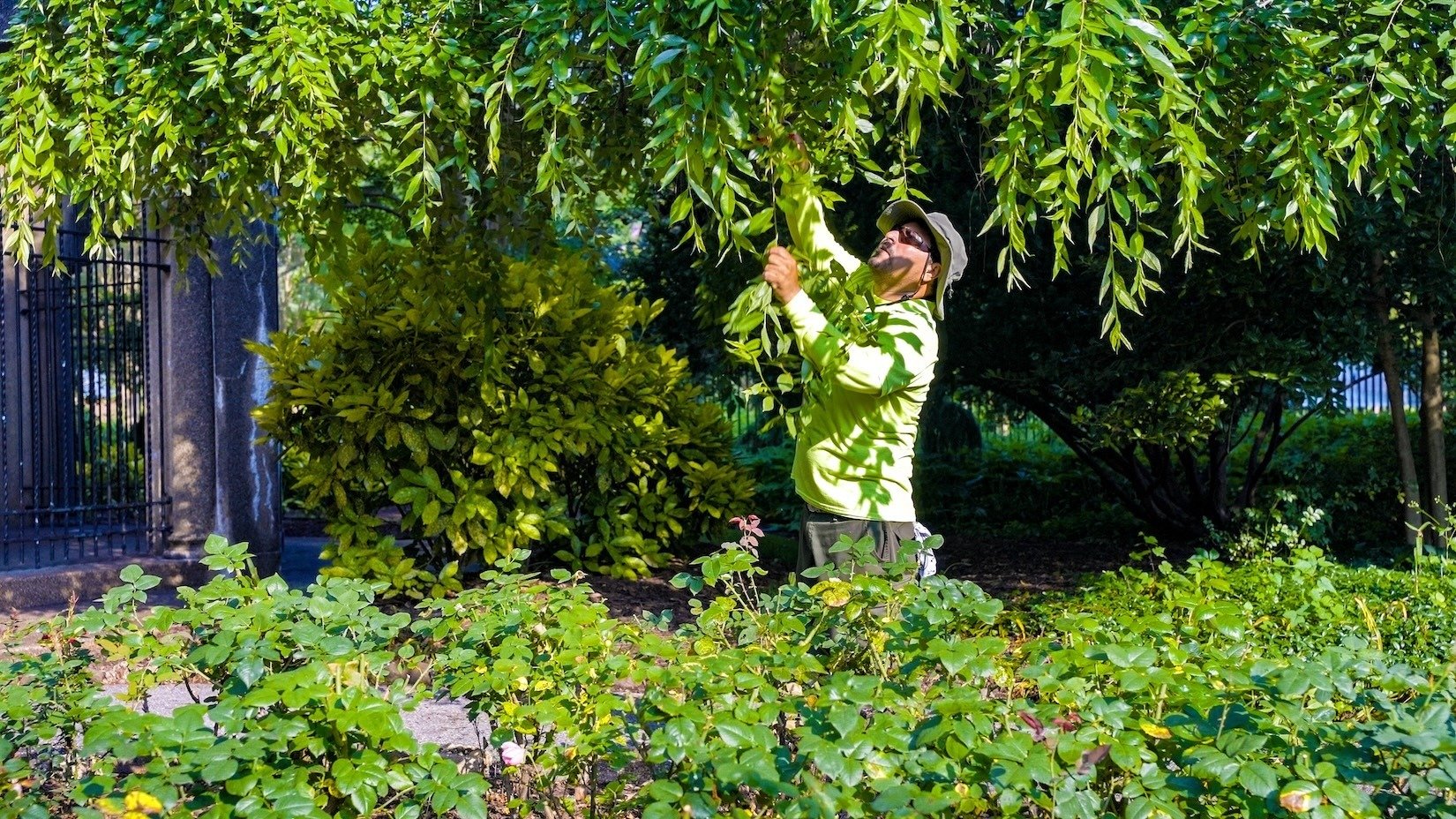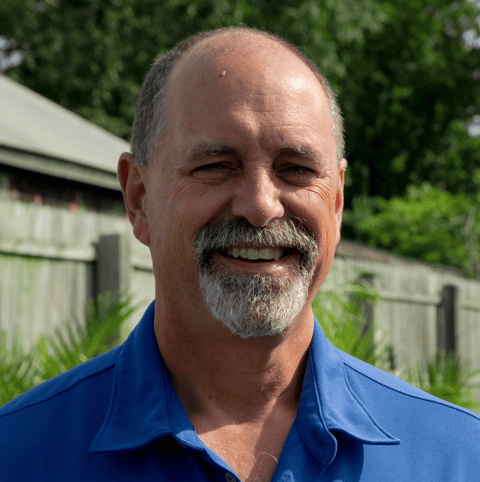
Commercial Property Tree Safety: How to Spot a Hazard Before It Falls
Everybody loves trees. They’re majestic, they give us shade, and some offer spectacular color in the fall and a profusion of beautiful blooms in the spring.
But sometimes, a tree’s health has suffered so much that it becomes a danger, jeopardizing your commercial landscape safety.
A tree on your property with significant decay or unstable branches is a hazard to your property and the people who visit it.
What’s involved in commercial property tree safety? Assessing trees for any safety issues like dead or dying branches. Removing dangerous branches. Bringing in a certified arborist when needed to assess a tree’s decay. Budgeting for tree care throughout the year.
James Kole, a branch manager at Level Green Landscaping, offers some tips.

Let’s learn more about tree hazard assessment, including:
- Commercial Landscape Safety: The Danger Of An Unhealthy Tree
- Commercial Tree Inspection Starts with Your Account Manager
- Commercial Tree Inspection: How To Identify A Dangerous Tree
- Commercial Tree Hazard Removal: How Level Green Can Help
- Tree Hazard Inspection: When It's Time For An Arborist
- Commercial Tree Hazard Removal: How To Remove A Dangerous Tree
- Budget for Tree Care Throughout the Year
- Treat Your Trees Right
Commercial Landscape Safety: The Danger Of An Unhealthy Tree
A tree with dead branches, decay, or disease poses a threat to people on your property, as well as to cars and buildings.
"If a tree isn't healthy, a high wind storm can knock down branches onto people, cars and buildings," Kole says. The weight of snow or ice can bring unstable branches down, too, he says.
When a tree has significant rot or decay, the whole tree could crash down, posing an even more dangerous situation.

Commercial Tree Inspection Starts with Your Account Manager
Your account manager is your first defense against dangerous trees, Kole says. If you haven't walked your property recently with your account manager for a tree hazard assessment, late fall is a great time.
With leaves down, the branches and their structure are more obvious than ever, and you can get a good look. Then, if you spot any problems, there's still time to act before snow and ice move in.
"Your account manager will likely see things you don't see," Kole says, since they’re trained in what to look for when it comes to commercial landscape safety.

Commercial Tree Inspection: How To Identify A Dangerous Tree
When Level Green account managers do a tree hazard assessment, they’re on the lookout for a variety of danger signs, Kole says.
"We may notice there are lots of dying branches, or the tree is leaning," Kole says. "We might notice the roots are exposed above the surface, or there's peeling bark, or mushrooms growing on the trunk. Those are all signs that a tree isn't healthy.”

Commercial Tree Hazard Removal: How Level Green Can Help
If there are a few problem branches that could come crashing down in a wind storm or under the weight of snow and ice, our trained crews can use a pole pruner to remove them, Kole says, as long as they're not higher than 15 feet off the ground.
Higher branches that require crews to climb the tree or climb a ladder require an arborist with the appropriate equipment and insurance, he says.
Level Green crews can also treat a diseased tree with fungicide if there's a chance to save it, he says.
Tree Hazard Inspection: When It's Time For An Arborist
“If we notice decay, we call in an arborist to assess the tree," Kole says.
An arborist can use a resistograph to assess how much decay is in a damaged tree, Kole says.
A resistograph is a drill-like instrument that detects wood decay, stages of rot, hollow areas and cracks in trees and translates the information into a graph. The results of the resistograph let us know if the tree needs to be removed or can potentially be saved.
The tiny drilling hole heals itself, and doesn’t damage the tree.

Commercial Tree Hazard Removal: How To Remove A Dangerous Tree
If a tree is beyond saving and has to be removed, Level Green calls on a professional tree removal service for the job. While we're experts at keeping trees healthy and pruning out frail branches before they become a hazard, we leave the big tree removal projects to the pros with the right expertise and equipment to help ensure your commercial landscape safety.
Budget for Tree Care Throughout the Year
Trees need occasional pruning to stay healthy, thriving and safe.
Pruning a tree throughout its lifetime will maintain its nice shape and health — and keep it from becoming a costly danger on your property.
Do you have a budget plan for tree pruning? You need one.
Many properties in Maryland, Virginia, and DC have trees that are 10, 20, 40, even 60 years old, towering 30 or 40 feet tall.
That means dead or dying branches that can tumble, causing significant damage. Routine commercial tree pruning takes those dangerous branches out before they fall, helping to ensure your commercial landscape safety.
Most landscape maintenance contracts don’t include routine care for trees taller than 15 feet. That’s what landscaping crews can reach from the ground with pole pruners or a pole saw.
If crews have to climb a ladder or use a bucket truck, that requires a different level of insurance coverage. A commercial tree service specializes in that. Level Green partners with trusted area tree companies to provide commercial tree services in DC, Maryland, and Virginia.
But what if you have 50 or 100 trees on your commercial property? Pruning them all can get costly.

You need a separate component of your budget to manage trees, just like you would for your roof or your lawn. We can help you make a plan to help ensure your commercial property tree safety.
Maybe you have 100 trees that are 15 years old. Over the next five years we’ll prune 20 trees a year. That makes the cost much more manageable than waiting five years and pruning 100 trees at once.
If you maintain your trees over time, that should reduce your costs in the long run. You won’t be forced to remove several trees in an emergency situation.
If a large tree falls on your property and you need emergency commercial tree removal on a weekend, that’s really expensive. If a tree falls on a car, that becomes an insurance and liability issue.
Many municipalities require a certain number of trees on properties. If you lose one, you have to replace it. It’s more expensive to replace a tree than to maintain it to be healthy.
Treat Your Trees Right
The better care trees get throughout their life, the longer they’ll live and the healthier they’ll be, with fewer dead branches and diseases.
“Some new properties that we take on haven't had a proper tree program for years, and may have several trees that need to come down," Kole says. "Properties that we've taken care of for a long time, their trees typically just need regular pruning to keep them healthy."
Trust Your Tree Health To Level Green
At Level Green Landscaping, we hope to nurture the beautiful trees on your property through many years of good health.
But if you have a tree that's unhealthy, and a danger to your property, we can help with that, too. Expert tree care is part of our commercial landscape maintenance services in Washington D.C., Maryland and Virginia.
If you’re not already a Level Green Landscaping client, we’d love to add you to our growing list of happy customers. Our focus is on commercial properties like offices, mixed-use sites, HOAs, municipalities and institutions.
Contact us at 202-544-0968. You can also request a free consultation online to meet with us one-on-one.
We’d love to hear from you.

Douglass Delano
Doug Delano (and Bill Hardy) opened Level Green Landscaping LLC in 2002 to offer Washington DC, Maryland and Virginia reliable commercial landscape maintenance services.

